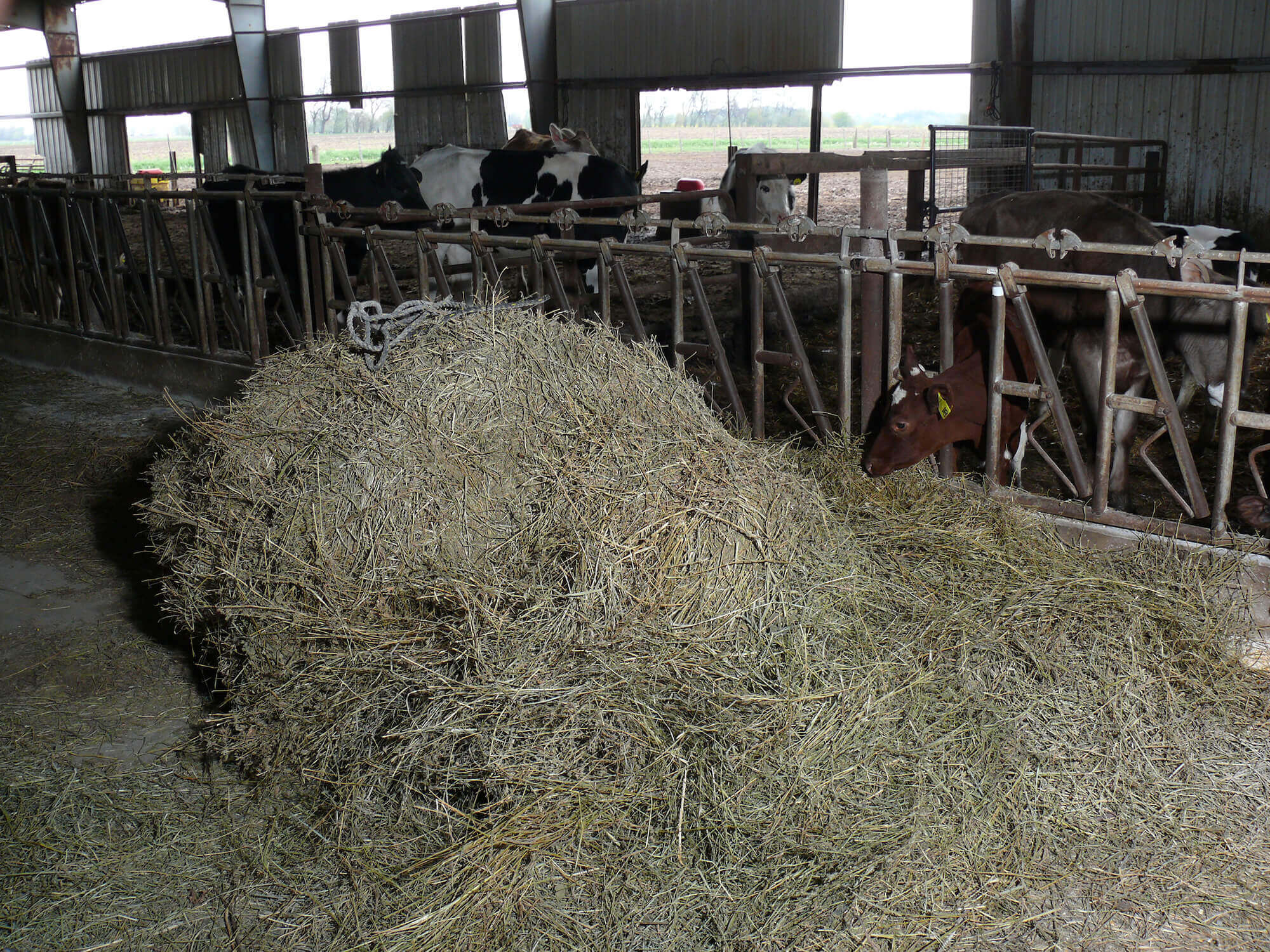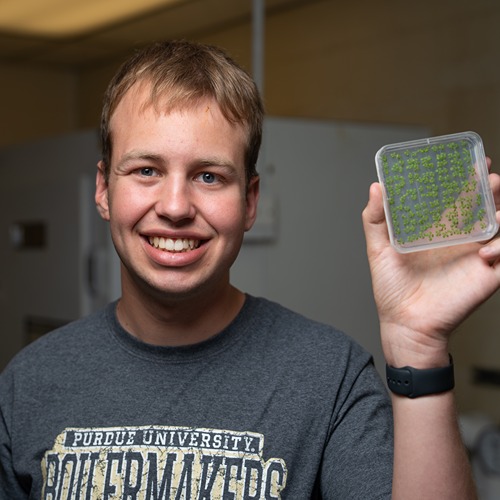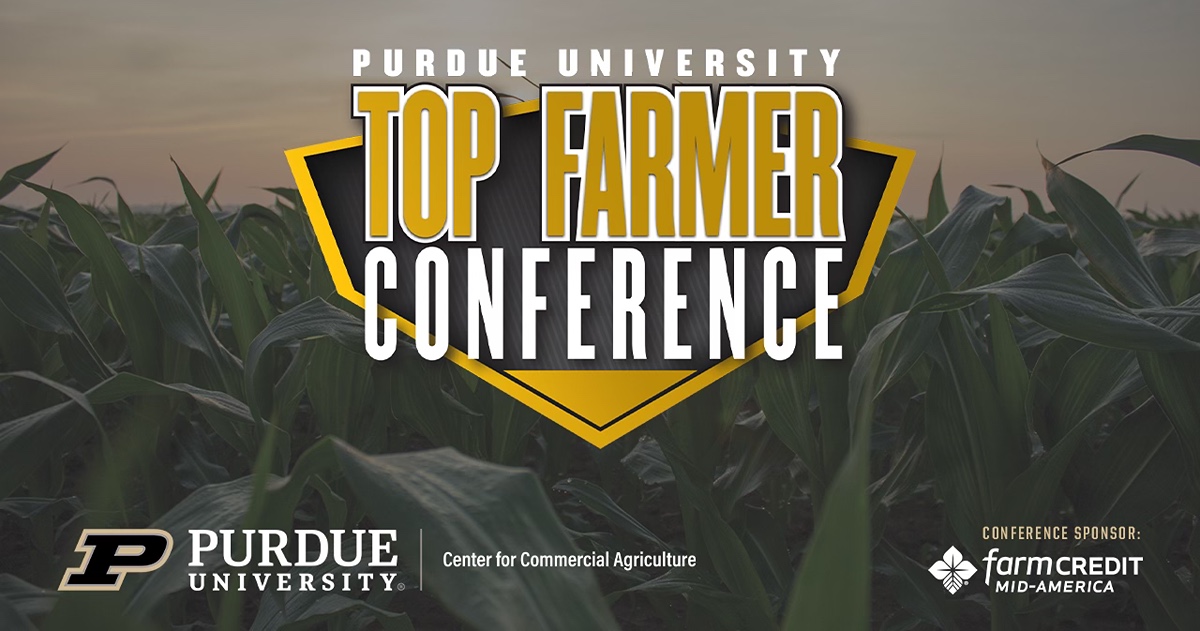Poor forage quality spurs concerns over malnutrition this winter
A Purdue University Extension specialist is warning livestock owners that forage they harvested earlier this year likely has lower-than-usual nutritional quality. Without proper supplements, there could be serious consequences for their animals.
“This is a very unusual year, and the quality is extremely low for this late-harvested forage,” said Keith Johnson, a professor of agronomy and Extension forage specialist. “We have less energy and protein with a more mature crop. There’s a crisis potentially brewing if people don’t pay attention to quality.”
Nutrition issues will be significant with cool-season grasses such as tall fescue, orchardgrass, smooth bromegrass, timothy and perennial ryegrass, as well as legumes such as alfalfa or red clover. Growers usually harvest these forages for the first time in mid- or late-May, but this year’s particularly wet spring kept them from the fields until late June to early July.
As forage crops mature, they increase fiber and lignin content, making them less digestible. Less digestible forage crops result in reduced nutrient supply to the animal. Dry matter intake potential is also compromised with high fiber content.
Improper nutrition can lead to weight loss, weakness, poor lactation, poor conception or a lengthened birthing period. Proper nutrition is important for any animal, but it is especially critical during late gestation and lactation.
A laboratory analysis of tall fescue harvested in late June verified significantly high fiber content. A cow, ewe, or doe in early lactation cannot consume enough of the tested hay to meet her needs because rate of passage through the digestive tract is slowed by the high fiber content. If not supplemented with other feedstuffs higher in energy and protein, these livestock will be starved of nutrients.
Johnson said it’s important for livestock producers to have their forage professionally tested, and then use the results to work with a trained nutritionists to develop a nutrition plan. Nutritionists may recommend adding soybean hulls, soybean meal, corn, distillers grains, corn gluten feed or other supplements to raise nutritional quality.
“It’s critical that you work with certified laboratories and trained nutritionists who have the expertise to really dial in the proper nutrition for your animals,” Johnson said.
Certified forage testing laboratories in Indiana listed on the National Forage Testing Association’s website include Sure-Tech Laboratories in Indianapolis and A&L Great Lakes Laboratories in Fort Wayne. He also said that the National Forage Testing Association’s website should be reviewed for proper sampling methods before sending anything to a lab. Many county Purdue Extension offices have a hay probe to loan for sampling hay.
Ron Lemenager, Purdue Extension beef specialist, and Nick Minton, Purdue Extension beef systems specialist, can discuss dietary requirements for beef cattle. Sheep and goat requirements can be provided by Mike Neary, Purdue Extension small ruminant specialist.
County Extension educators may be trained to offer guidance on animal nutrition or could suggest reliable livestock nutritionists in the area. Feed resource companies may also be able to help, too. Johnson stressed that advice should come from someone trained in developing cost-effective rations that meet animal needs.
 A wet spring kept farmers from harvesting forage until much later than usual this year, and that could have serious consequences for nutrient quality. Purdue University Extension specialists suggest livestock operators have their forage tested and seek guidance from a nutritionist to ensure that animals receive proper nutrition this winter. (Purdue Agricultural Communication photo)
A wet spring kept farmers from harvesting forage until much later than usual this year, and that could have serious consequences for nutrient quality. Purdue University Extension specialists suggest livestock operators have their forage tested and seek guidance from a nutritionist to ensure that animals receive proper nutrition this winter. (Purdue Agricultural Communication photo) 




